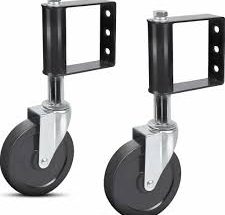There are many new ways to generate revenue for your business, and this article explores a few of them. These revenue models can include subscriptions and IoT data. You can even offer unlimited use of a product over a subscription period. Here’s how. If you’re not sure which revenue model will work best for your business, consider some of these ideas. You might be surprised by which ones you’ve never heard of.
IoT data
IoT-enabled business models can help improve existing products and services or create new ones. Pay-per-use services are a great example of this. Farmers can pay for IoT-enabled services that ensure their crops are of the highest quality. The same is true for manufacturing. IoT-enabled business models help manufacturing organizations collect data on customer behavior. This data can help them adjust products to improve their customer satisfaction or choose a billing model that suits their goals.
The supply chain is one of the most aggressive adopters of IoT technologies. For instance, IoT-enabled connected devices can identify assets and monitor them in real-time, keeping supply chain entities up to date. This not only increases visibility but also reduces inefficiencies. IoT-enabled products can also facilitate compliance and protect expensive equipment. Without IoT, on-site inspections can lead to financial losses.
Connected devices
Several industries have found new ways to generate income from connected devices. Traditionally, companies sold products on shelves and charged per-mile insurance rates. Now, however, more companies are embracing the pay-as-you-go model. In fact, companies are developing connected products and services to provide value-added services that go beyond the original purchase price. Depending on the market, connected products and services can offer recurring revenue streams that are more lucrative than the initial purchase price.
Many connected products have consumable parts. For example, a Tile requires annual replacement batteries, and connected glucose monitoring devices require customized replacement strips. These products are comparable to razor blades. Ultimately, they can create new revenue models for businesses. And if the right devices can make a difference in the lives of consumers, they can help businesses grow and create new revenue streams. Moreover, connected devices will be a great source of data that businesses can sell.
Customer service
For those who have come to know the traditional sales process, product-led growth may sound like an intimidating concept. But product-led growth has its advantages. Not only can you avoid hiring expensive salespeople, but you can also free up people’s time and energy for higher-value strategic work. How? By leveraging the power of the product lifecycle. Here are some of the benefits of product-led growth.
By using the power of IoT and connected devices, you can create new revenue streams and re-engineer your business model. You can create new revenue models by integrating IoT data with customer service applications. With connected products, you can add value-added services, subscriptions, and apps beyond the initial purchase price. The more value you provide, the more you can sell. This is especially true for digital products.
Subscription business model
When creating a subscription business model, consider your target market. If you’re targeting large companies, you may need to implement a tiered pricing system with lower tiers geared toward smaller businesses. But if your product or service is aimed at individuals, you can offer a low-cost tier to people who need a certain feature on a more regular basis. Subscriptions can also be a good way to fill in gaps in your product or service.
As you plan your pricing, keep in mind that a low subscription price is unlikely to convert into a high revenue stream. In addition, it’s important to offer enough differentiation between your subscription pricing options. If your tiers are too diverse, customers may experience “analysis paralysis” and decide not to subscribe at all. To avoid this, limit the number of options you offer to two to four.




